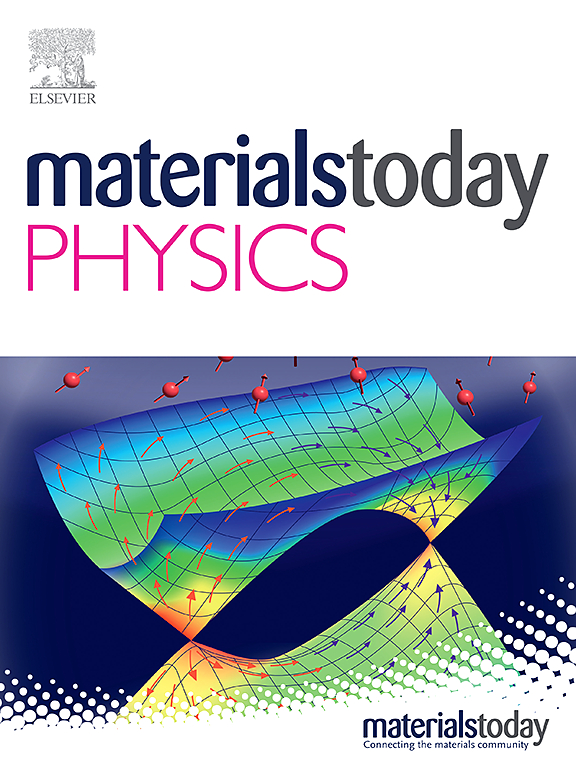Theoretical and numerical study on thermoelectric transient cooling for hotspot elimination under alternating current mode
IF 10
2区 材料科学
Q1 MATERIALS SCIENCE, MULTIDISCIPLINARY
引用次数: 0
Abstract
The escalating power density in modern microelectronics gives rise to high-frequency thermal hotspots that pose severe challenges to on-chip thermal management. Microscale thermoelectric coolers (μ-TECs), possessing unique advantages such as, rapid response, precise temperature control, and high reliability, offer promising solution for localized chip-level cooling. However, conventional steady-state and transient pulse cooling methods remain insufficient for dissipating the sustained, ultra-high heat flux generated by these hotspots. In this study, we investigated the heat transport behavior of thermoelectric cooling under alternating current mode through a combined approach of analytical modeling and finite element simulations. The results demonstrated that the hotspot temperatures could be effectively suppressed by optimally matching the amplitude and phase of the alternating current applied to μ-TECs. Additionally, high thermal conductivity and low interfacial contact resistance further enhanced active cooling performance. Furthermore, the integration of a negative direct current offset into the optimized silicon-based μ-TEC achieved a 3.29 K reduction in peak hotspot temperature and significantly reduced temperature fluctuation from 65.62 K to 20.66 K, under an ultra-high heat flux of 6.37 kW/cm2. This study points out the priorities for materials research and device optimization for on-chip μ-TECs and paves the way for achieving transient thermal management of chip hotspots.
本征性质、界面接触和直流耦合对交流模式下热电瞬态冷却消热点影响的理论和数值研究
现代微电子器件中不断升级的功率密度产生了高频热热点,对片上热管理提出了严峻的挑战。微尺度热电冷却器(μ- tec)具有响应速度快、温度控制精确、可靠性高等独特优势,为芯片级本地化冷却提供了很好的解决方案。然而,传统的稳态和瞬态脉冲冷却方法仍然不足以消散这些热点产生的持续超高热流通量。在这项研究中,我们通过分析建模和有限元模拟相结合的方法研究了交流模式下热电冷却的热传递行为。结果表明,通过优化μ- tec上交流电流的幅值和相位匹配,可以有效抑制热点温度。此外,高导热性和低界面接触电阻进一步提高了主动冷却性能。此外,在6.37 kW/cm2的超高热流密度下,将负直流偏置集成到优化的硅基μ-TEC中,峰值热点温度降低了3.29 K,温度波动从65.62 K显著降低到20.66 K。本研究指出了片上μ- tec材料研究和器件优化的重点,为实现芯片热点的瞬态热管理铺平了道路。
本文章由计算机程序翻译,如有差异,请以英文原文为准。
求助全文
约1分钟内获得全文
求助全文
来源期刊

Materials Today Physics
Materials Science-General Materials Science
CiteScore
14.00
自引率
7.80%
发文量
284
审稿时长
15 days
期刊介绍:
Materials Today Physics is a multi-disciplinary journal focused on the physics of materials, encompassing both the physical properties and materials synthesis. Operating at the interface of physics and materials science, this journal covers one of the largest and most dynamic fields within physical science. The forefront research in materials physics is driving advancements in new materials, uncovering new physics, and fostering novel applications at an unprecedented pace.
 求助内容:
求助内容: 应助结果提醒方式:
应助结果提醒方式:


